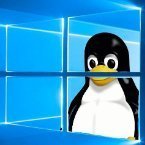- 0 replies
- 1,202 views
- Add Reply
- 0 replies
- 1,145 views
- Add Reply
- 0 replies
- 2,537 views
- Add Reply
- 0 replies
- 6,336 views
- Add Reply
- 0 replies
- 1,481 views
- Add Reply
Leica Geosystems unveils Leica TerrainMapper-3

By Lurker,


Leica Geosystems, part of Hexagon, introduces the Leica TerrainMapper-3 airborne LiDAR sensor, featuring new scan pattern configurability to support the widest variety of applications and requirements in a single system.
Building upon Leica Geosystems’ legacy of LiDAR efficiency, the TerrainMapper-3 provides three scan patterns for superior productivity and to customise the sensor’s performance to specific applications. Circle scan patterns enhance 3D modelling of urban areas or steep terr
How Upskilling in GIS Aids Educational Policy Research
By IRES,
How Upskilling in GIS Aids Educational Policy Research
Understanding the distribution of student demographics is crucial for making informed decisions. This is where Geographic Information Systems (GIS) and remote sensing technologies play a vital role. By upskilling in GIS, researchers can harness the power of spatial analysis and mapping to gain valuable insights into student populations and educational disparities.
GIS is a powerful tool that allows researchers to visualize, analyze
The role of ExtSpecR in streamlining UAV-based tree phenomics and spectral analysis

By EmperoR,


Due to their ability to collect tree phenotypic trait data in large quantities, unmanned aerial vehicles, or UAVs, have completely changed the forestry industry. Even with the progress made in object detection and remote sensing, precise identification and extraction of spectral data for individual trees continue to be major obstacles, frequently necessitating tedious manual annotation.
For better tree detection, current research focuses on developing segmentation algorithms and convolution
OpenLayers 9.0.0 Released

By Lurker,
The 9.0 release add several new features, including a Google Maps source (finally!), improved WebGL line rendering, and a new symbol and text decluttering implementation. We also improved and broadened flat styles support for both WebGL and Canvas 2D renderers. For better developer experience, we made more types generic and fixed some issues with types.
Backwards incompatible changes
Improved render order of decluttered items
Decluttered items in Vector and VectorTile layers now maintai
AGI and GGP to Work Together to Secure Geography at the Heart of Government Decision Making

By Lurker,
The Association for Geographic Information (AGI) and the Government Geography Profession (GGP) have agreed to work together to combine their experience, expertise and outreach to further the impact of geospatial data and technology within the public sector. By working together, they will help grow the geospatial community, and will build on recent activities such as the AGI’s Skills Roundtable.
“The UK is at the forefront of geospatial. Now more than ever, geographers are combining increasi
-
Forum Statistics
8.7k
Total Topics43.5k
Total Posts




